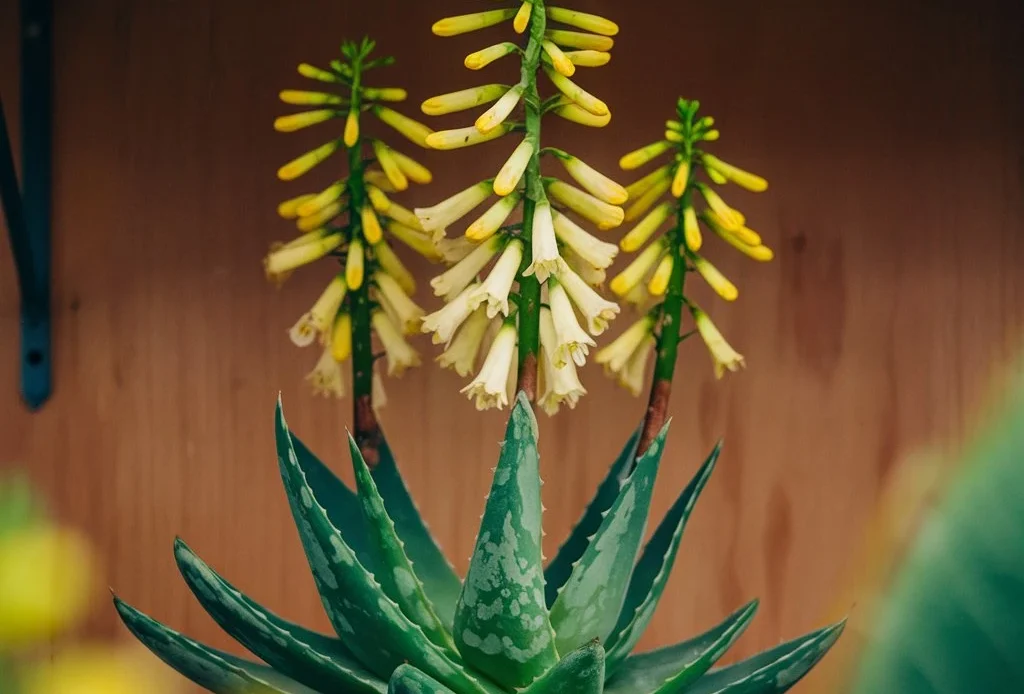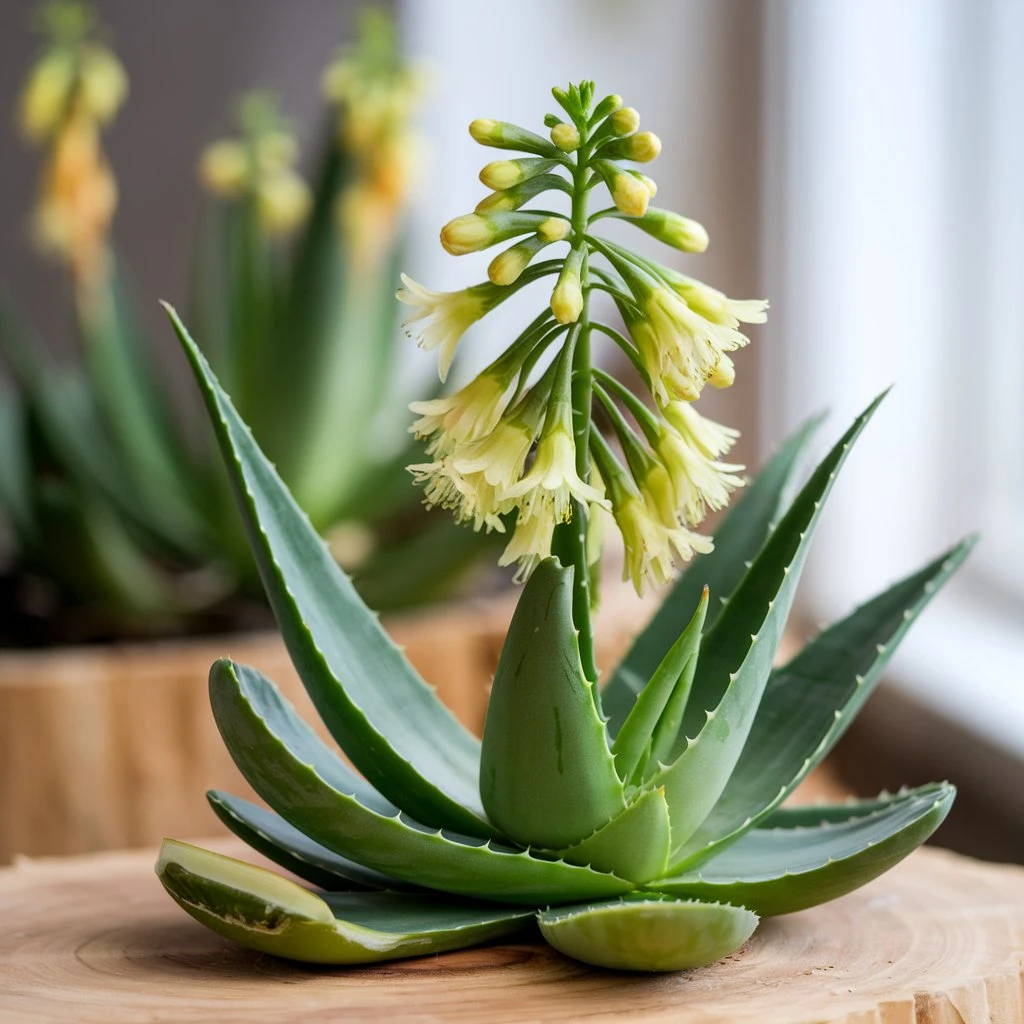
Understanding Aloe: Nature’s Versatile Succulent
The aloe plant is a fascinating succulent that captivates both seasoned gardeners and novices alike. Known for its resilience and unique appearance, this plant thrives in arid climates, making it a symbol of endurance in the plant kingdom. With its thick, fleshy leaves adorned with distinctive serrated edges, the aloe plant not only serves as a striking decorative piece but also holds a treasure trove of health benefits.
The most famous among the various species is Aloe vera, which has been cherished for centuries for its medicinal properties. The gel extracted from its leaves is renowned for its soothing effects on the skin. Often used to treat sunburns, cuts, and other minor skin irritations, aloe vera has garnered a reputation as a natural remedy. Its anti-inflammatory and hydrating properties make it a staple in many skincare products, contributing to its popularity in holistic health practices.
In addition to its topical applications, the aloe plant has found a place in the culinary world. Its mild flavor and gel-like texture lend themselves well to various dishes, particularly in smoothies, salads, and even desserts. Incorporating aloe into meals not only adds an exotic touch but also introduces a wealth of vitamins, minerals, and antioxidants to your diet.

Growing an aloe plant is relatively simple as it requires minimal care. It flourishes in well-draining soil and prefers bright, indirect sunlight. Overwatering is the primary concern for many gardeners, as the aloe plant is susceptible to root rot. With proper care, these hardy plants can thrive for years, rewarding their owners with both beauty and utility.
In essence, the aloe plant is a versatile succulent that enriches our lives, whether through its healing properties, culinary uses, or simply as a striking addition to our homes. Its blend of aesthetic appeal and functional benefits makes it a truly remarkable plant worthy of any indoor or outdoor garden.
Table of Contents
The Science Behind Aloe’s Texture
Understanding the science behind the texture of the aloe plant reveals a fascinating interplay of biology and chemistry that contributes to its unique characteristics. The aloe plant is known for its thick, fleshy leaves, which store a substantial amount of water. This succulent adaptation is vital for survival in arid environments, allowing the plant to thrive where other vegetation falters. The leaves contain specialized cells known as parenchyma, which are responsible for water storage and play a crucial role in the texture of the plant.
Within these leaves lies a gel-like substance composed predominantly of water, mucilage, and polysaccharides. This gel, often referred to as Aloe vera gel, possesses a distinctive, slippery texture that has garnered attention for its myriad applications in both the health and culinary realms. The gel’s viscosity is largely due to the presence of polysaccharides, such as acemannan, which not only contribute to its unique mouthfeel but also provide a variety of health benefits, including anti-inflammatory and antimicrobial properties.
The science of how heat affects the aloe plant is equally intriguing. When subjected to cooking methods, such as steaming or boiling, the gel undergoes a transformation. The heat disrupts the plant’s cell structure, altering its texture from firm and slightly crunchy to soft and gelatinous. This transformation opens the door to new culinary possibilities, allowing chefs to experiment with the aloe plant in various dishes, from smoothies to salads.
Furthermore, the texture of the aloe plant is influenced by its growing conditions, including light, soil quality, and water availability. Plants grown in optimal conditions tend to have a more robust texture, making them suitable for both aesthetic and culinary uses. In contrast, plants that struggle due to inadequate care may develop a less desirable texture, impacting their usability.
In summary, the science behind the texture of the aloe plant is the complex interplay of its biological structure, gel composition, and external environmental factors. Understanding these elements not only enhances appreciation for this remarkable succulent but also informs best practices for its cultivation and use.
Can Aloe Become Soft and Chewy?
The question of whether the aloe plant can become soft and chewy during cooking is intriguing, as it highlights the transformative properties of this unique succulent. Known for its firm, crisp texture when raw, the aloe plant has much to offer when it comes to culinary experimentation.
When exposed to heat, the aloe plant undergoes significant changes in both texture and flavor. Cooking methods, particularly steaming, can soften the fibrous structure of the leaves. This process involves breaking down the cellular walls of the aloe, allowing its inner gel to become more pliable. As a result, the once-crunchy pieces can turn into a texture that is pleasantly soft and slightly chewy, making it a delightful addition to various dishes.

Steaming is a popular method for achieving this transformation. When the algae plant is steamed, it retains many of its beneficial properties while allowing for a shift in texture. The cooking process enhances the plant’s mild flavor, making it more palatable and versatile for culinary applications. Once steamed, the aloe plant can be incorporated into smoothies, salads, or even desserts, providing a unique texture that elevates the overall dish.
However, achieving the perfect chewy consistency requires attention to timing. Over-steaming can lead to a mushy texture, while undercooking may leave the aloe too firm. Striking the right balance allows cooks to enjoy the soft, chewy characteristics of this remarkable plant, showcasing its adaptability in the kitchen.
In summary, the aloe plant indeed can become soft and chewy, particularly when cooked using methods like steaming. This transformation not only alters its texture but also enhances its culinary potential, inviting a world of flavors and textures to explore.
The Benefits of Cooking with Aloe
Cooking with the aloe plant opens a gateway to a myriad of health benefits and culinary delights. Known primarily for its soothing gel used in skincare, the aloe has much more to offer when incorporated into meals. Its subtle flavor and unique texture make it a versatile ingredient that can enhance both the nutritional profile and the sensory experience of various dishes.
One of the primary benefits of cooking with aloe is its rich nutritional content. The gel contains essential vitamins, such as vitamins A, C, and E, along with minerals like calcium and magnesium. These nutrients contribute to overall health and well-being, making the aloe plant a functional food that supports various bodily functions. Moreover, the gel’s natural anti-inflammatory properties can aid in digestion and promote gut health, making it a valuable addition to a balanced diet.
In addition to its health benefits, the aloe plant introduces a delightful texture that can elevate a dish. When cooked, particularly through methods such as steaming, the aloe transforms from a crunchy texture to a soft, slightly chewy consistency. This alteration adds an intriguing mouthfeel, making it an excellent complement to salads, smoothies, or even savory dishes. It can absorb flavors beautifully, acting as a canvas for spices and marinades.
The versatility of aloe extends beyond taste and nutrition; it also serves as a low-calorie ingredient. For those seeking to reduce caloric intake without sacrificing flavor, aloe can replace heavier ingredients in recipes, making it an ideal component for health-conscious cooking.

In conclusion, the aloe plant is not just a decorative succulent; it is a powerhouse of nutrition and flavor that enhances culinary creativity. Embracing the benefits of cooking with aloe can lead to a healthier lifestyle while introducing new textures and tastes to the palate.
Common Questions and Myths About Steaming Aloe
Steaming the aloe plant has garnered attention in culinary circles, yet several common questions and myths persist about this versatile succulent. One prevalent myth is that steaming aloe diminishes its health benefits. In reality, while some nutrients may be sensitive to heat, steaming is a gentle cooking method that retains a significant portion of the aloe plant’s beneficial properties. This technique not only preserves vitamins and minerals but can also enhance the plant’s digestibility, making it easier for the body to absorb its nutrients.
Another common inquiry revolves around the texture of steamed aloe. Many believe that cooking it results in an unpalatable mush. However, when done correctly, steaming transforms the firm, crunchy texture of raw aloe into a pleasantly soft and slightly chewy consistency. This change in texture can make the aloe plant more appealing in various dishes, allowing it to blend seamlessly into smoothies, salads, and even savory meals.
People also often wonder about the flavor of steamed aloe. While raw aloe may possess a mild bitterness, cooking it tends to mellow the taste, resulting in a subtly sweet and refreshing flavor. This versatility allows chefs to incorporate aloe into a wide range of culinary creations, from sweet to savory.
Finally, there’s a misconception that only specific types of aloe are suitable for steaming. In fact, while Aloe vera is the most popular and widely used, many species of the aloe plant can be steamed and enjoyed. However, it’s essential to ensure that any aloe chosen for culinary purposes is safe for consumption.
In summary, understanding the truths behind common questions and myths about steaming algae can enhance its culinary appeal. By embracing this cooking method, one can unlock the full potential of the aloe plant while enjoying its numerous health benefits and delightful flavors.
By Mark


